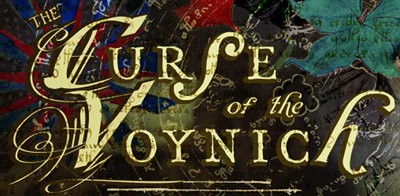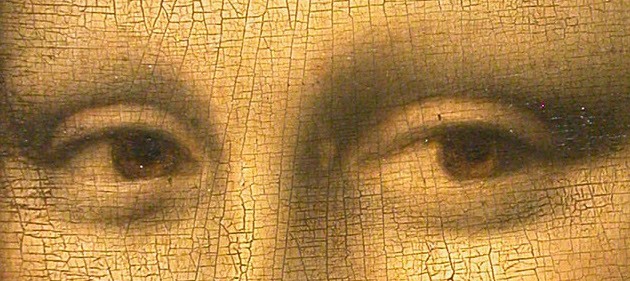Somewhere during the last decade, historians picked up got the idea that history book publishers wanted to be pitched ‘vertical’ books about individual microsubjects, books that somehow try to recapitulate the last N-thousand years of human history as viewed through the narrow prism of, say, salt or swearing or codpieces. All of which somehow reminds me of the joke about the gynaecologist who preferred to decorate the hall through the letterbox, I’m not quite sure why…
Anyway, I’ve been working my way through Pamela O. Long’s epic (2004) book “Openness, Secrecy, Authority”, which is basically ‘the (vertical) history of secrecy pre-Enlightenment’. It covers pretty much all of the historical things I think every Voynich researcher ought to be acutely aware of – books of secrets, alchemy, patents, recipes, Hermeticism, Theophilus, Poimander, Pythagoras, Plotinus, Vitruvius, Hero of Alexandria, Philo, Guido da Vigevano, Fontana, Brunelleschi, Taccola, Kyeser,Valturio, Ghiberti, Filarete, Piero della Francesca, Leonardo da Vinci, Alberti, Ficino, Agrippa, Paracelsus, etc. However, it’s proving to be a haltingly slow process, because every chapter or so I feel compelled to go away and check out what she’s saying to see if I believe her or not. Even though 50% of the time I actually disagree with her conclusions and interpretations, this is almost certainly because she has attempted to cover an extraordinary breadth of subject-matter within a single volume, as well as to give some kind of a socio-theoretic chapter-ending spin on the extraordinarily heterogenous set of things that fall within range of her chosen subject thread, both things that tend to work out badly for authors. 🙂
A full review will follow (because I haven’t yet finished it), but I thought I’d briefly mention it because it inspired the following brief note on books on machines of war. As I mentioned yesterday, Johann Adam Schall von Bell wrote one for the Ming Emperor; Roberto Valturio’s “De Re Militari” caused a stir when Sigismondo Malatesta tried to send a copy to Istanbul with his favourite court painter Matteo de’ Pasti; gay vegetarian pacifist Leonardo da Vinci famously tried to ingratiate himself with the Sforza Duke of Milan with his 1482 war machine sketches; Guido da Vigevano wrote one; Giovanni Fontana wrote one; Antonio Averlino sort-of-claimed to have written one (on engines); and so on.
What I learnt from Pamela O. Long’s books was also that Cornelius Agrippa “attempted to obtain patronage… by making reference to a treatise he planned to write on a engines of war” (p.162), while Alberti promised (in his De re aedificatoria, p.135 of the 1988 Rykwert edition) to “deal with war machines at greater length elsewhere, perhaps implying that he was planning to write a treatise on the subject” (p.125).
But… hold on a minute?! Even though the conventional starting point for this whole subject is one of archival rarity (i.e. that manuscript books of secrets are the exception rather than the rule), it seems that if you mine the subject matter enough you find that people back then didn’t qualify as a free-agent master architect / engineer looking for courtly patronage unless they could point to their own secret book of extraordinary machines to back up their claims. I suppose this is broadly the Quattrocento equivalent of the modern Cult Of The Business Plan, where startup founders could only get audiences with those 1990s princes (yes, Venture Capitalists) if they had a suitably weighty document & spreadsheet to back up their outrageously nonsensical business bet (i.e. a virally-marketed scalable global pet massage franchising scheme etc).
Historians often point to the Quattrocento as being the effective birth of intellectual property (yes, I know Venice issued various earlier patent-like documents, but it’s arguable whether these count): drawing a broad modern parallel, the notion of intellectual capital was sometimes caricatured in the late 1990s as being a way of making a bunch of PhDs losing money look like a good investment. In case you think I’m stretching language too far here, the Quattrocento has two constrasting examplars for these trends: Brunelleschi and Leonardo da Vinci. Brunelleschi started off (it’s highly likely) as a goldsmith with a close interest in clockmaking, and used his own personal practice to develop complex machine ideas – he was empirical/experiential/adaptive, preferring not to transfer his physical constructions onto paper because people would then copy them ad infinitum. Leonardo, by contrast, was constructing theoretical and speculative models for designs without significant regard to their practicalities: I would argue that he could only construct his designs on paper as that was where they belonged – he was theoretical/abstract/creative. In short, Brunelleschi is all about intellectual property while Leonardo is all about intellectual capital, and never the twain shall meet: perhaps his innate practicality is why Brunelleschi is held in higher esteem than Leonardo in Italy.
I think that even though intellectual capital (a demonstrable capacity for having bright ideas, usually theoretical) has a quite different rationale to intellectual property (a set of bright ideas someone believed they owned, usually pragmatic), both types of Quattrocento books of machines performed roughly the same kind of function even though the ideas in them were hardly ever used. Viewed from this angle, they are no more than “alchemical herbal”-style McGuffins that people constructed to try to gain credibility and/or patronage, by becoming an auctor/authority – AKA hire me “because I’m worth it”. Ultimately, I suspect that hyping up your secret book on machines was simply the early modern equivalent of the entrepreneural elevator pitch. 🙂
But now I’m mixing business school models with historical models, while straying dangerously close to the kind of theoretical stuff I was happy to lambast a mere six paragraphs back: probably a sign I ought to call a halt for the day. Make of it all what you will! 🙂


